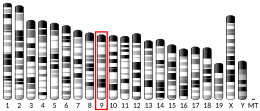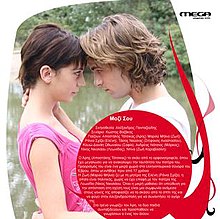CXCR5
CXCR5| CXCR5 | |||||||||||||||||||||||||
|---|---|---|---|---|---|---|---|---|---|---|---|---|---|---|---|---|---|---|---|---|---|---|---|---|---|
| 식별자 | |||||||||||||||||||||||||
| 별칭 | CXCR5, BLR1, CD185, MDR15, C-X-C 모티브 케모킨 수용체 5, C-X-C 케모킨 수용체 유형 5 | ||||||||||||||||||||||||
| 외부 ID | OMIM: 601613 MGI: 103567 호몰로진: 1298 GeneCard: CXCR5 | ||||||||||||||||||||||||
| |||||||||||||||||||||||||
| |||||||||||||||||||||||||
| |||||||||||||||||||||||||
| |||||||||||||||||||||||||
| 직교체 | |||||||||||||||||||||||||
| 종 | 인간 | 마우스 | |||||||||||||||||||||||
| 엔트레스 | |||||||||||||||||||||||||
| 앙상블 | |||||||||||||||||||||||||
| 유니프로트 | |||||||||||||||||||||||||
| RefSeq(mRNA) | |||||||||||||||||||||||||
| RefSeq(단백질) | |||||||||||||||||||||||||
| 위치(UCSC) | Chr 11: 118.88 – 118.9Mb | Cr 9: 44.42 – 44.47Mb | |||||||||||||||||||||||
| PubMed 검색 | [3] | [4] | |||||||||||||||||||||||
| 위키다타 | |||||||||||||||||||||||||
| |||||||||||||||||||||||||
C-X-C chemokine receptor type 5 (CXC-R5) also known as CD185 (cluster of differentiation 185) or Burkitt lymphoma receptor 1 (BLR1) is a G protein-coupled seven transmembrane receptor for chemokine CXCL13 (also known as BLC) and belongs to the CXC chemokine receptor family.그것은 T세포가 림프절과 B세포 영역으로 이동할 수 있게 한다.인간에서 CXC-R5 단백질은 CXCR5 유전자에 의해 암호화된다.[5]
조직 분포 및 기능
BLR1 / CXCR5 유전자는 비장뿐 아니라 림프절의 모낭과 같은 부르키트의 림프종과 림프조직에 구체적으로 표현되어 있다.그 유전자는 B세포의 이동에 필수적인 역할을 한다.[6]CXCL13 분비물 B세포는 림프절을 찾을 수 있다.[6]
또한 최근 일부 연구에서는 CXCL13이 CXCR5를 통해 림프절과 페이어의 패치 개발을 유발하는 조혈전구세포(CD3− CD4+)를 모집할 수 있다고 제안했다.[7][8]
다른 연구들은 CXCR5 표현 없이는 B세포 모낭에 접근할 수 없기 때문에 T세포에서 CXCR5의 역할을 강조한다.[9][10]이는 B세포와 T세포가 상호작용해야 Ig급 스위치를 활성화할 수 있기 때문에 고친화성 항체 생산의 핵심 단계다.[9]
CXCR5는 TF(Tollicular Helper, Tfh) 셀의 정의 마커로 간주되는 경우가 많지만, CD4와[11][12] CD8 T 셀 모두에서 표현되는 것으로 나타났다.[13]
암발달에 있어서의 역할
최근 유방암 환자의 CXCR5 과다압박은 림프절 전이율과 높은 상관관계를 갖고 [14]있으며, CXCR5 발현이 높아지면 기능적인 p53 단백질이 부족한 유방종양의 비정상적인 세포 생존과 이동에 기여할 수 있는 것으로 나타났다.[15]CXCR5 유전자 촉진제 영역에 위치하며 다발성 경화증 위험과 관련된 SNP rs630923의 사소한 알레글은 활성화 중 B세포에서 CXCR5 유전자 촉진제 활동이 감소하여 자가면역반응이 감소할 수 있음
그동안 케모킨과 케모킨 수용체가 암 발생과 유지에 관여하는 것으로 생각되어 왔으나, 최근에는 CXCR5가 전립선암의 전이 진행에 대한 역할로 조사를 받게 되었다.최근 한 연구에 따르면 전립선 암 조직과 세포 라인이 CXCR5의 기본이 아닌 더 높은 수치를 나타낸다고 한다.[17]게다가, 이 연구는 CXCR5와 글리슨 점수 사이의 상관관계를 발견했다.CXCR5의 위치를 추가로 고려했으며, 세포질 및 막 CXCR5가 양성 및 초기 전립선 암과 상관되는 동안 더 높은 Gleason 점수가 핵 CXCR5와 상관되었다.[17]
참조
- ^ a b c GRCh38: 앙상블 릴리스 89: ENSG00000160683 - 앙상블, 2017년 5월
- ^ a b c GRCm38: 앙상블 릴리스 89: ENSMUSG000047880 - 앙상블, 2017년 5월
- ^ "Human PubMed Reference:". National Center for Biotechnology Information, U.S. National Library of Medicine.
- ^ "Mouse PubMed Reference:". National Center for Biotechnology Information, U.S. National Library of Medicine.
- ^ Dobner T, Wolf I, Emrich T, Lipp M (November 1992). "Differentiation-specific expression of a novel G protein-coupled receptor from Burkitt's lymphoma". European Journal of Immunology. 22 (11): 2795–9. doi:10.1002/eji.1830221107. PMID 1425907. S2CID 35096818.
- ^ a b Förster R, Mattis AE, Kremmer E, Wolf E, Brem G, Lipp M (December 1996). "A putative chemokine receptor, BLR1, directs B cell migration to defined lymphoid organs and specific anatomic compartments of the spleen". Cell. 87 (6): 1037–47. doi:10.1016/S0092-8674(00)81798-5. PMID 8978608. S2CID 17558174.
- ^ Honda, Kenya; Nakano, Hiroyasu; Yoshida, Hisahiro; Nishikawa, Satomi; Rennert, Paul; Ikuta, Koichi; Tamechika, Masakatsu; Yamaguchi, Kazuhito; Fukumoto, Tetsuo (2001-03-05). "Molecular Basis for Hematopoietic/Mesenchymal Interaction during Initiation of Peyer's Patch Organogenesis". The Journal of Experimental Medicine. 193 (5): 621–630. doi:10.1084/jem.193.5.621. ISSN 0022-1007. PMC 2193398. PMID 11238592.
- ^ Finke, D; Acha-Orbea, H; Mattis, A; Lipp, M; Kraehenbuhl, J.P (September 2002). "CD4+CD3− Cells Induce Peyer's Patch Development". Immunity. 17 (3): 363–373. doi:10.1016/S1074-7613(02)00395-3. PMID 12354388.
- ^ a b Junt, Tobias; Fink, Katja; Förster, Reinhold; Senn, Beatrice; Lipp, Martin; Muramatsu, Masamichi; Zinkernagel, Rolf M.; Ludewig, Burkhard; Hengartner, Hans (2005-12-01). "CXCR5-dependent seeding of follicular niches by B and Th cells augments antiviral B cell responses". Journal of Immunology. 175 (11): 7109–7116. doi:10.4049/jimmunol.175.11.7109. ISSN 0022-1767. PMID 16301613.
- ^ Hardtke, S. (2005-09-15). "Balanced expression of CXCR5 and CCR7 on follicular T helper cells determines their transient positioning to lymph node follicles and is essential for efficient B-cell help". Blood. 106 (6): 1924–1931. doi:10.1182/blood-2004-11-4494. ISSN 0006-4971. PMID 15899919.
- ^ Chevalier N, Jarrossay D, Ho E, Avery DT, Ma CS, Yu D, Sallusto F, Tangye SG, Mackay CR (May 2011). "CXCR5 expressing human central memory CD4 T cells and their relevance for humoral immune responses". Journal of Immunology. 186 (10): 5556–68. doi:10.4049/jimmunol.1002828. PMID 21471443.
- ^ He R, Hou S, Liu C, Zhang A, Bai Q, Han M, Yang Y, Wei G, Shen T, Yang X, Xu L, Chen X, Hao Y, Wang P, Zhu C, Ou J, Liang H, Ni T, Zhang X, Zhou X, Deng K, Chen Y, Luo Y, Xu J, Qi H, Wu Y, Ye L (August 2016). "Follicular CXCR5- expressing CD8(+) T cells curtail chronic viral infection". Nature. 537 (7620): 412–428. Bibcode:2016Natur.537..412H. doi:10.1038/nature19317. PMID 27501245. S2CID 4469688.
- ^ Moser B (2015). "CXCR5, the Defining Marker for Follicular B Helper T (TFH) Cells". Frontiers in Immunology. 6: 296. doi:10.3389/fimmu.2015.00296. PMC 4459225. PMID 26106395.
- ^ Biswas S, Sengupta S, Roy Chowdhury S, Jana S, Mandal G, Mandal PK, Saha N, Malhotra V, Gupta A, Kuprash DV, Bhattacharyya A (January 2014). "CXCL13-CXCR5 co-expression regulates epithelial to mesenchymal transition of breast cancer cells during lymph node metastasis". Breast Cancer Research and Treatment. 143 (2): 265–76. doi:10.1007/s10549-013-2811-8. PMID 24337540. S2CID 2937341.
- ^ Mitkin NA, Hook CD, Schwartz AM, Biswas S, Kochetkov DV, Muratova AM, Afanasyeva MA, Kravchenko JE, Bhattacharyya A, Kuprash DV (March 2015). "p53-dependent expression of CXCR5 chemokine receptor in MCF-7 breast cancer cells". Scientific Reports. 5 (5): 9330. Bibcode:2015NatSR...5E9330M. doi:10.1038/srep09330. PMC 4365401. PMID 25786345.
- ^ Mitkin NA, Muratova AM, Schwartz AM, Kuprash DV (Nov 2016). "The A Allele of the Single-Nucleotide Polymorphism rs630923 Creates a Binding Site for MEF2C Resulting in Reduced CXCR5 Promoter Activity in B-Cell Lymphoblastic Cell Lines". Frontiers in Immunology. 7 (515): 515. doi:10.3389/fimmu.2016.00515. PMC 5112242. PMID 27909439.
- ^ a b Singh, Shailesh; Singh, Rajesh; Singh, Udai P.; Rai, Shesh N.; Novakovic, Kristian R.; Chung, Leland W.K.; Didier, Peter J.; Grizzle, William E.; Lillard, James W. (2009-11-15). "Clinical and biological significance of CXCR5 expressed by prostate cancer specimens and cell lines". International Journal of Cancer. 125 (10): 2288–2295. doi:10.1002/ijc.24574. PMC 3600527. PMID 19610059.
외부 링크
- UCSC 게놈 브라우저의 인간 CXCR5 유전체 위치 및 CXCR5 유전자 세부 정보 페이지.
추가 읽기
- Lipp M, Müller G (2006). "Shaping up adaptive immunity: the impact of CCR7 and CXCR5 on lymphocyte trafficking". Verhandlungen der Deutschen Gesellschaft für Pathologie. 87: 90–101. PMID 16888899.
- Barella L, Loetscher M, Tobler A, Baggiolini M, Moser B (August 1995). "Sequence variation of a novel heptahelical leucocyte receptor through alternative transcript formation". The Biochemical Journal. 309 ( Pt 3) (3): 773–9. doi:10.1042/bj3090773. PMC 1135699. PMID 7639692.
- Legler DF, Loetscher M, Roos RS, Clark-Lewis I, Baggiolini M, Moser B (February 1998). "B cell-attracting chemokine 1, a human CXC chemokine expressed in lymphoid tissues, selectively attracts B lymphocytes via BLR1/CXCR5". The Journal of Experimental Medicine. 187 (4): 655–60. doi:10.1084/jem.187.4.655. PMC 2212150. PMID 9463416.
- Gunn MD, Ngo VN, Ansel KM, Ekland EH, Cyster JG, Williams LT (February 1998). "A B-cell-homing chemokine made in lymphoid follicles activates Burkitt's lymphoma receptor-1". Nature. 391 (6669): 799–803. Bibcode:1998Natur.391..799G. doi:10.1038/35876. PMID 9486651. S2CID 4373691.
- Müller G, Lipp M (September 2001). "Signal transduction by the chemokine receptor CXCR5: structural requirements for G protein activation analyzed by chimeric CXCR1/CXCR5 molecules". Biological Chemistry. 382 (9): 1387–97. doi:10.1515/BC.2001.171. PMID 11688722. S2CID 21366051.
- Schaerli P, Loetscher P, Moser B (December 2001). "Cutting edge: induction of follicular homing precedes effector Th cell development". Journal of Immunology. 167 (11): 6082–6. doi:10.4049/jimmunol.167.11.6082. PMID 11714765.
- Kim CH, Johnston B, Butcher EC (July 2002). "Trafficking machinery of NKT cells: shared and differential chemokine receptor expression among V alpha 24(+)V beta 11(+) NKT cell subsets with distinct cytokine-producing capacity". Blood. 100 (1): 11–6. doi:10.1182/blood-2001-12-0196. PMID 12070001.
- Carlsen HS, Baekkevold ES, Johansen FE, Haraldsen G, Brandtzaeg P (September 2002). "B cell attracting chemokine 1 (CXCL13) and its receptor CXCR5 are expressed in normal and aberrant gut associated lymphoid tissue". Gut. 51 (3): 364–71. doi:10.1136/gut.51.3.364. PMC 1773345. PMID 12171958.
- Battle TE, Yen A (October 2002). "Ectopic expression of CXCR5/BLR1 accelerates retinoic acid- and vitamin D(3)-induced monocytic differentiation of U937 cells". Experimental Biology and Medicine. 227 (9): 753–62. doi:10.1177/153537020222700906. PMID 12324654. S2CID 26070911.
- Lisignoli G, Toneguzzi S, Piacentini A, Cattini L, Lenti A, Tschon M, Cristino S, Grassi F, Facchini A (January 2003). "Human osteoblasts express functional CXC chemokine receptors 3 and 5: activation by their ligands, CXCL10 and CXCL13, significantly induces alkaline phosphatase and beta-N-acetylhexosaminidase release". Journal of Cellular Physiology. 194 (1): 71–9. doi:10.1002/jcp.10188. PMID 12447991. S2CID 8031523.
- Chan CC, Shen D, Hackett JJ, Buggage RR, Tuaillon N (February 2003). "Expression of chemokine receptors, CXCR4 and CXCR5, and chemokines, BLC and SDF-1, in the eyes of patients with primary intraocular lymphoma". Ophthalmology. 110 (2): 421–6. doi:10.1016/S0161-6420(02)01737-2. PMID 12578791.
- Flynn G, Maru S, Loughlin J, Romero IA, Male D (March 2003). "Regulation of chemokine receptor expression in human microglia and astrocytes". Journal of Neuroimmunology. 136 (1–2): 84–93. doi:10.1016/S0165-5728(03)00009-2. PMID 12620646. S2CID 39725685.
- Lisignoli G, Piacentini A, Toneguzzi S, Grassi F, Tschon M, Cristino S, Facchini A, Mariani E (2004). "Age-associated changes in functional response to CXCR3 and CXCR5 chemokine receptors in human osteoblasts". Biogerontology. 4 (5): 309–17. doi:10.1023/A:1026203502385. PMID 14618028. S2CID 20511946.
- Aust G, Sittig D, Becherer L, Anderegg U, Schütz A, Lamesch P, Schmücking E (February 2004). "The role of CXCR5 and its ligand CXCL13 in the compartmentalization of lymphocytes in thyroids affected by autoimmune thyroid diseases". European Journal of Endocrinology. 150 (2): 225–34. doi:10.1530/eje.0.1500225. PMID 14763921.
- Howard OM, Dong HF, Su SB, Caspi RR, Chen X, Plotz P, Oppenheim JJ (June 2005). "Autoantigens signal through chemokine receptors: uveitis antigens induce CXCR3- and CXCR5-expressing lymphocytes and immature dendritic cells to migrate". Blood. 105 (11): 4207–14. doi:10.1182/blood-2004-07-2697. PMC 1895027. PMID 15713799.
- Steinmetz OM, Panzer U, Kneissler U, Harendza S, Lipp M, Helmchen U, Stahl RA (April 2005). "BCA-1/CXCL13 expression is associated with CXCR5-positive B-cell cluster formation in acute renal transplant rejection". Kidney International. 67 (4): 1616–21. doi:10.1111/j.1523-1755.2005.00244.x. PMID 15780119.
- Hu C, Xiong J, Zhang L, Huang B, Zhang Q, Li Q, Yang M, Wu Y, Wu Q, Shen Q, Gao Q, Zhang K, Sun Z, Liu J, Jin Y, Tan J (August 2004). "PEG10 activation by co-stimulation of CXCR5 and CCR7 essentially contributes to resistance to apoptosis in CD19+CD34+ B cells from patients with B cell lineage acute and chronic lymphocytic leukemia". Cellular & Molecular Immunology. 1 (4): 280–94. PMID 16225771.







